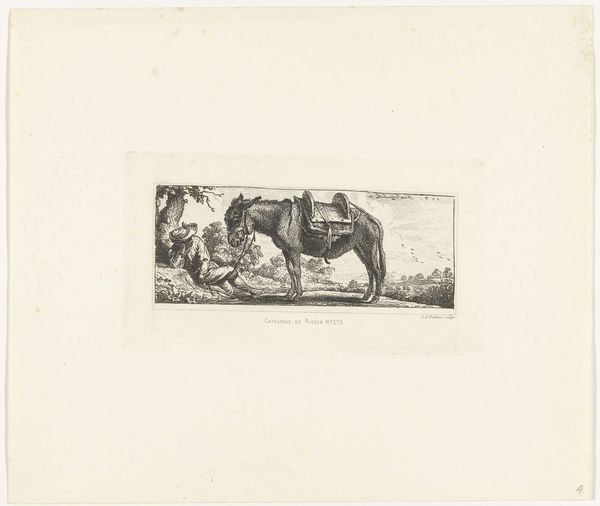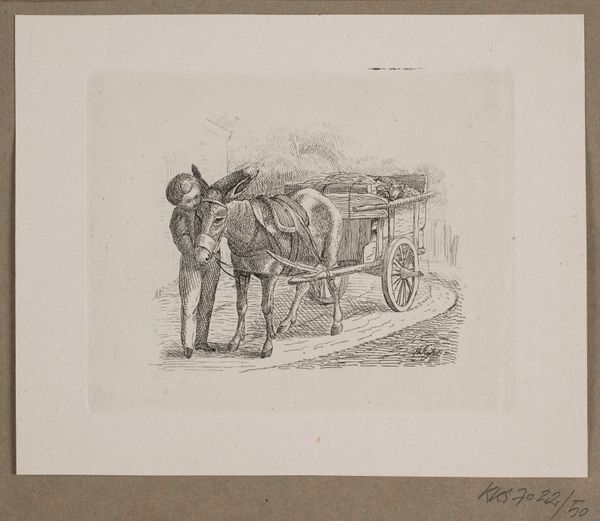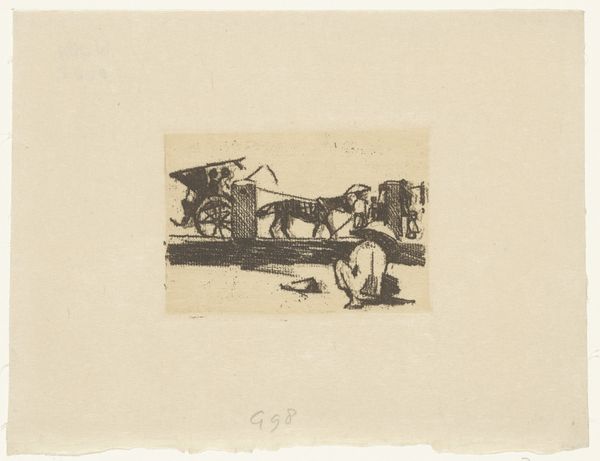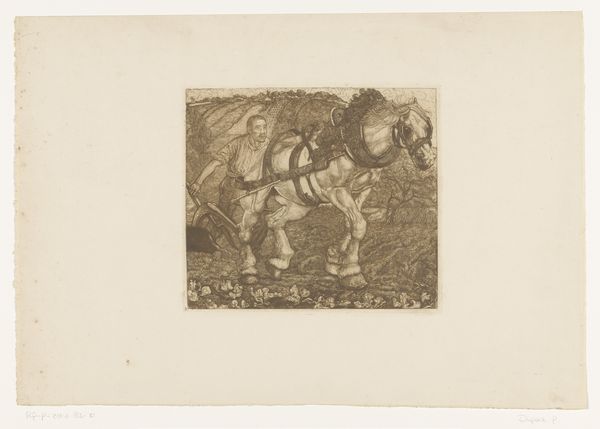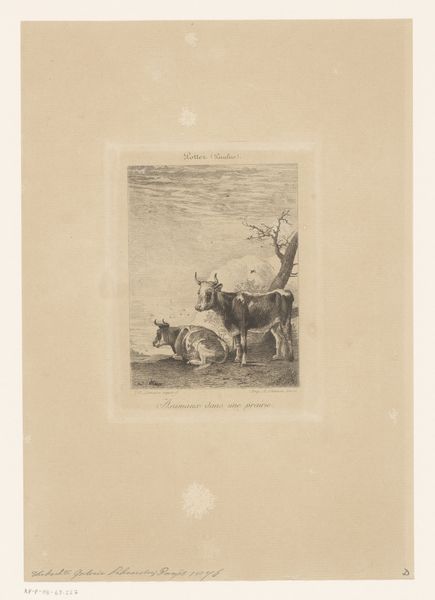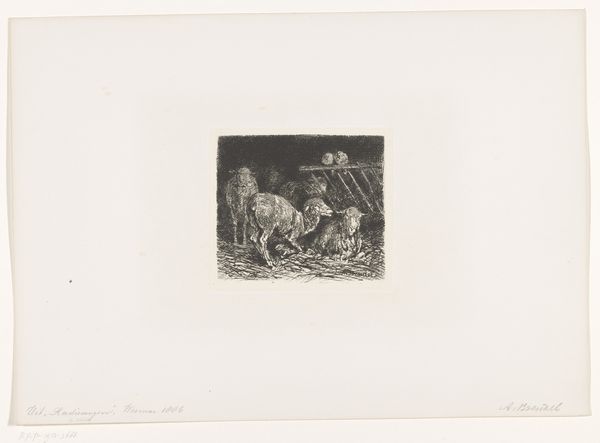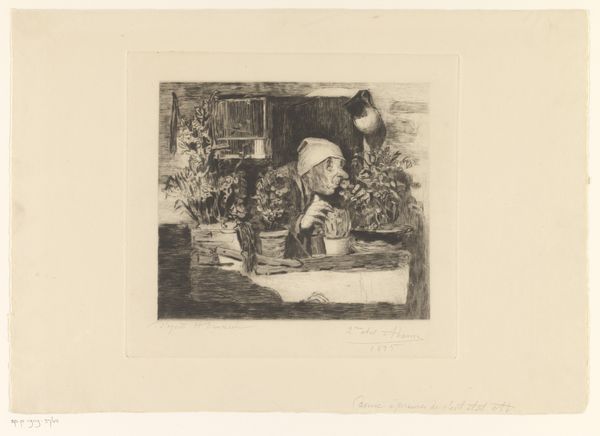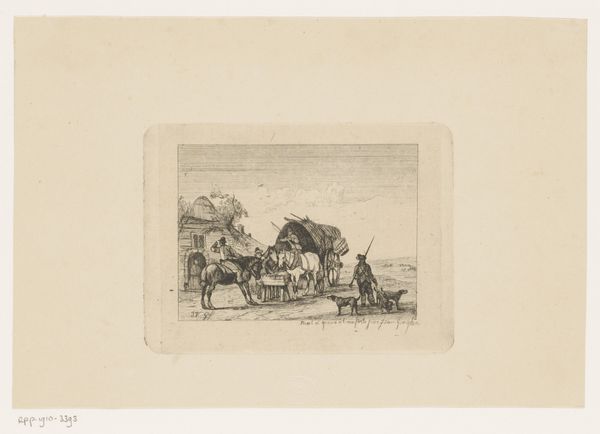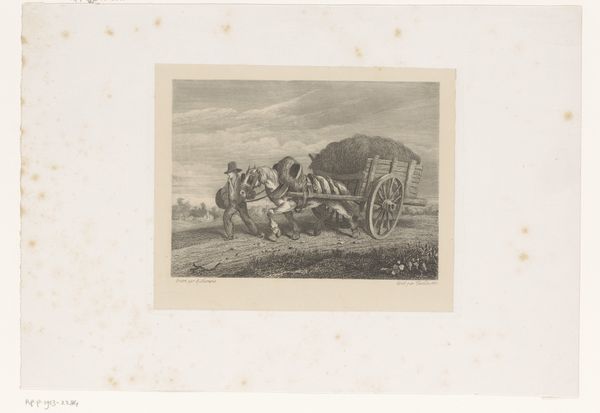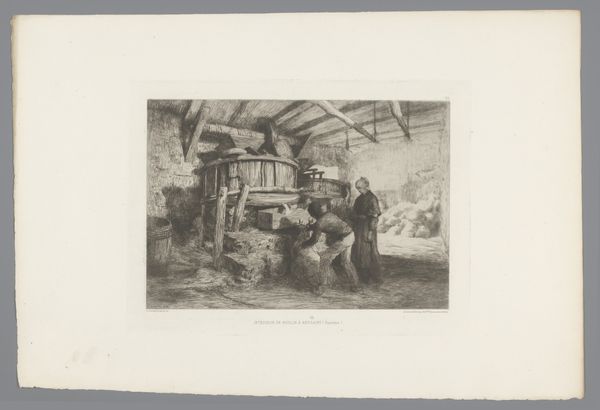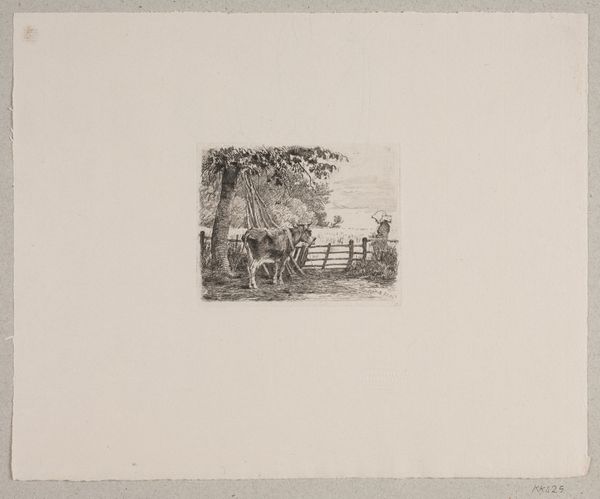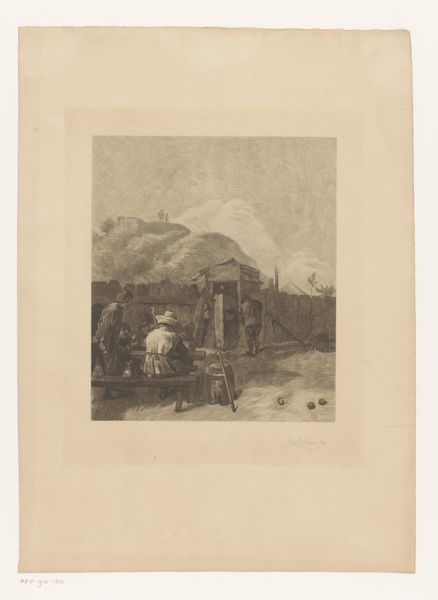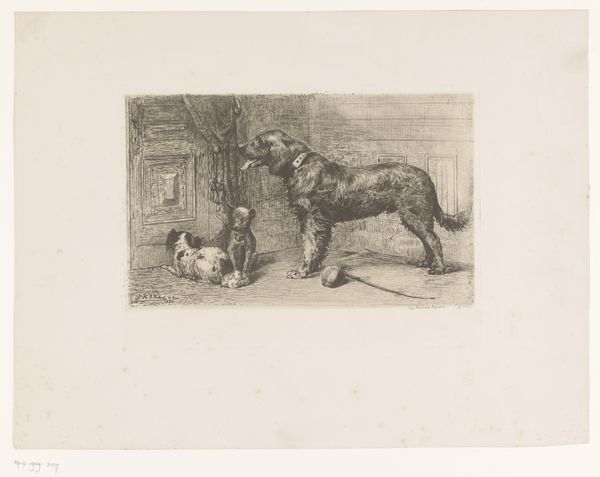
drawing, print, etching
#
drawing
#
animal
# print
#
etching
#
pencil drawing
#
realism
Dimensions: height 108 mm, width 178 mm
Copyright: Rijks Museum: Open Domain
Curator: Here we have an etching by Adolf Eduard Herstein, dating sometime between 1879 and 1932, titled "Bok en geit bij mand," which translates to "Buck and goat by basket." Editor: It’s a quiet, almost austere piece. The stark monochrome palette lends it a feeling of gentle introspection. There’s something humble and unaffected in its presentation. Curator: Absolutely. Etching as a printmaking process allows for incredibly fine detail. Look at the way Herstein has used the technique to capture the texture of the goats’ coats and the weave of the basket. He emphasizes the craft and the labor that is embedded in its production, from the selection of materials to the artist's hand. Editor: For me, the composition evokes the longstanding symbology around pastoral life. Goats themselves, depending on the context, carry meanings of both virility and stubbornness. And the basket… it suggests bounty, harvest, the rewards of labor, wouldn’t you agree? Curator: Well, I'd argue that the focus on a working animal in proximity to a functional object situates this print firmly within a narrative of material culture and animal labor, which might be consumed by an upwardly mobile bourgeoisie interested in investing into farmland… Editor: Fair point, but don’t you think that the animals' placement suggests a subtle symbolic meaning as well? One goat stands tall and watchful while the other buries its face in the basket. It could suggest diligence but also mindless consumption. Curator: Or perhaps a naturalistic scene representing an agricultural scene witnessed by Herstein? There is the work itself: the preparation of the plate, the careful application of acid. It is the slow reveal of an image rooted in process. We shouldn’t underestimate this etching technique to represent labor practices. Editor: I still believe there is meaning to be excavated by considering historical or social elements; after all, even mundane things bear cultural and symbolic meanings that shift over time and should not be overlooked.. Curator: Ultimately, the image exists as an artifact that carries traces of the artist's hand, of production, of a very specific mode of making. The means of creation are just as telling as whatever interpretation that can be added to that. Editor: Agreed, in its unassuming way, Herstein's work manages to distill complex relationships into a seemingly simple scene. A reflection of ourselves, mirrored through the animals and the objects that occupy our shared spaces.
Comments
No comments
Be the first to comment and join the conversation on the ultimate creative platform.
